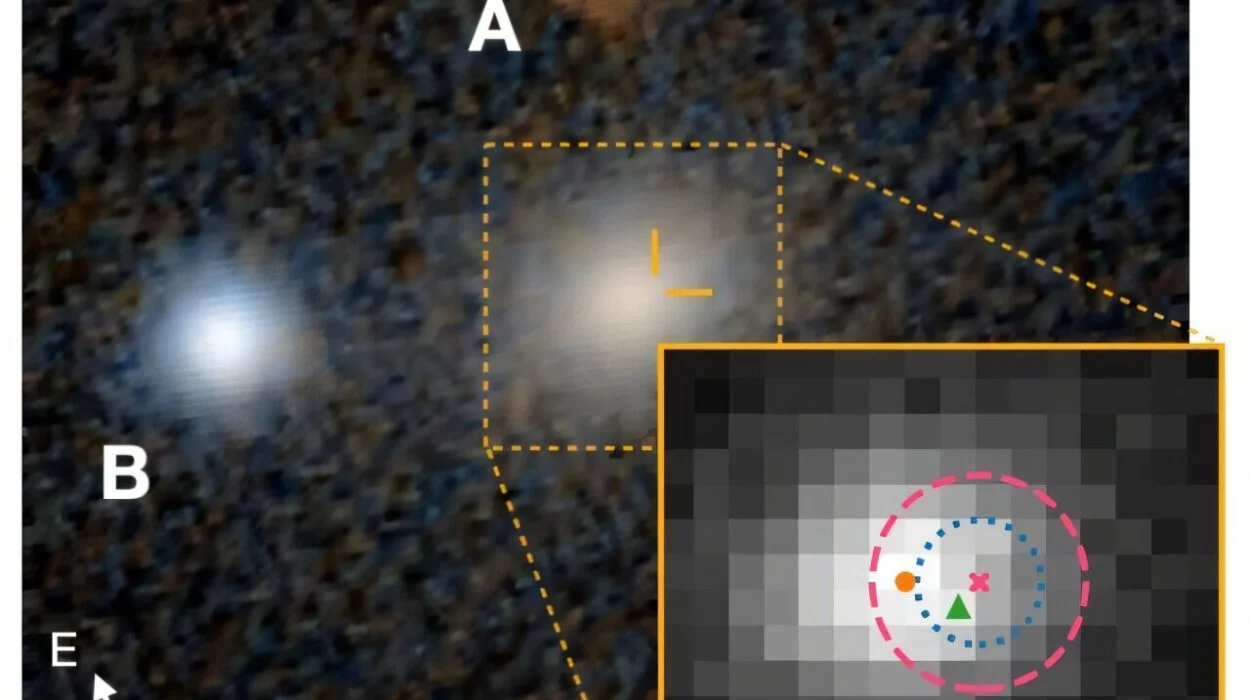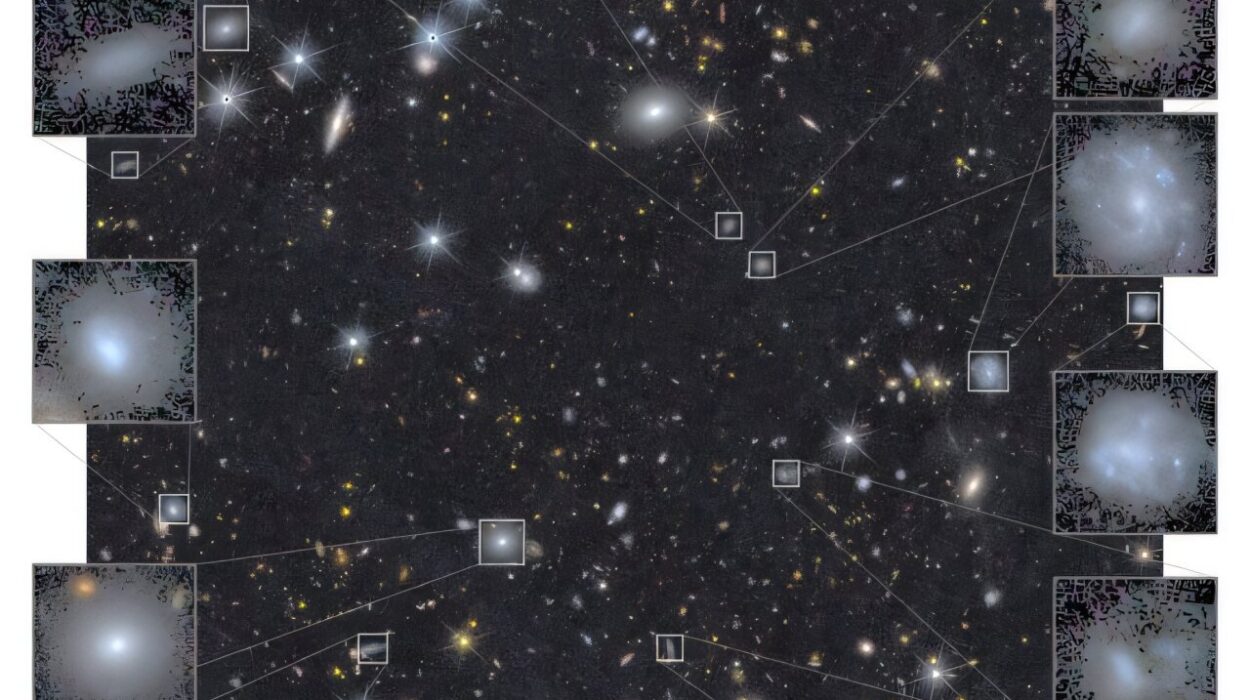Deep in the cosmic tapestry, nearly two billion light-years away, lies a peculiar celestial phenomenon that continues to challenge astronomers’ understanding of how galaxies evolve and interact with their surroundings. The subject of renewed investigation by a team of Serbian astronomers, 3C 315, is an X-shaped radio galaxy that offers not only a spectacular sight but also important clues about the turbulent lives of active galactic nuclei (AGN).
By meticulously analyzing data from Leahy’s Atlas of DRAGNs (Double Radio Sources Associated with Galactic Nuclei) and the extensive NASA/IPAC Extragalactic Database (NED), the research team, led by Vesna Borka Jovanović of the University of Belgrade, has shed new light on the enigmatic structure and dynamic behavior of this cosmic oddity. Their findings, published on March 10, 2024, on the arXiv preprint server, deepen our understanding of the complex interplay between supermassive black holes and the galaxies they inhabit.
What Are Radio Galaxies, and Why Are They Important?
Before diving into the specific mysteries of 3C 315, it’s worth understanding why radio galaxies are a big deal in astronomy. Most galaxies, including our own Milky Way, emit light that we can see with optical telescopes. But radio galaxies? They’re cosmic beasts on another level—blasting out colossal streams of radio waves, often millions of light-years in length.
At the heart of these galaxies lies an active galactic nucleus (AGN)—an incredibly energetic region powered by a supermassive black hole. As this monster accretes (gobbles up) gas and dust, it releases enormous amounts of energy. Part of that energy gets channeled into twin jets of plasma that shoot out from the galaxy’s core at near-light speeds. As these jets slam into intergalactic space, they create massive lobes of radio-emitting plasma. These lobes are detectable with radio telescopes, mapping out the invisible but immensely powerful processes at work.
Now, among these already extraordinary galaxies, a select few exhibit an X-shaped or “winged” morphology. Imagine the luminous trails of jets crossing in space, forming an enormous “X.” The reasons behind these exotic structures are still under debate, but they could tell us a lot about galaxy mergers, black hole spin flips, and cosmic evolution.
Meet 3C 315: A Prototype X-Shaped Radio Galaxy
Among X-shaped radio galaxies, 3C 315 stands out as a prototype example. Classified as a double radio source associated with a galactic nucleus (DRAGN), it has two distinct sets of radio lobes. One pair aligns in a northwest-southeast direction, while another, fainter pair (the so-called “wings”) stretches out at a sharp angle. This cross-shaped arrangement makes 3C 315 both visually striking and scientifically significant.
3C 315 isn’t floating in isolation. It’s anchored to an elliptical galaxy, nestled within a galaxy cluster. This neighborhood is a crucial piece of the puzzle because galaxy clusters are dense environments where gravitational interactions, mergers, and turbulent gas flows are common. All these factors can influence how a radio galaxy evolves and why it looks the way it does.
The Serbian Astronomers’ Study: Mapping the Invisible
Led by Vesna Borka Jovanović, the Serbian team aimed to decode the spectral secrets of 3C 315. They used data from two important frequency ranges: 1,417 to 2,695 MHz, and 1,646 to 2,695 MHz. Why does this matter? Because the spectral index—a measure of how a galaxy’s radio brightness changes with frequency—can reveal what kind of processes are at work in its jets and lobes.
Their detailed spectral index maps uncovered something fascinating. The spectral index of 3C 315 varies strongly across different regions, showing distinct patterns along three main pathways through the galaxy. This suggests different areas are aging differently, perhaps because of variations in jet power, magnetic fields, or interactions with the surrounding environment.
On average, the spectral index was higher than zero, with only a few exceptions. A positive spectral index typically indicates non-thermal synchrotron radiation, which is the hallmark of high-energy particles spiraling through magnetic fields. This synchrotron radiation dominates the galaxy’s emission, affirming that the lobes and wings are powered by energetic electrons accelerated in the jets.
A Quiet Outer Structure and a Powerful Core
The researchers also confirmed that 3C 315 boasts a bright, compact radio core, along with weaker hotspots at the edges of its main lobes. These hotspots are where the jets slam into intergalactic space, creating shocks that re-accelerate particles. The outer structure of the radio lobes, however, appears relaxed and diffuse, hinting at a galaxy whose activity may be winding down—or perhaps restarting after a dormant phase.
This duality—active core but relaxed outer lobes—supports the idea that 3C 315 has gone through multiple epochs of activity. In other words, its black hole may have turned on, blasted out jets, turned off, and then switched on again with a different jet axis. This kind of “start-stop” behavior can result in an X-shaped appearance, where older lobes fade into ghostly wings, and newer jets carve out fresh paths.
The Cosmic Environment: A Crucial Factor
Another key takeaway from the study is the importance of environment. Since 3C 315 and its host galaxy are embedded in a cluster, the dense intergalactic medium may have shaped the direction and evolution of its jets. Clusters are crowded places where galaxies interact gravitationally, and gas flows can exert pressure on radio lobes, bending and distorting them into wing-like shapes.
Alternatively, a galactic merger may have flipped the spin axis of 3C 315’s central black hole, changing the direction of its jets. This scenario would also account for the galaxy’s X-shaped structure, and the presence of an elliptical host makes this an attractive theory—since elliptical galaxies often result from mergers.
Why 3C 315 Matters in the Bigger Picture
X-shaped radio galaxies like 3C 315 aren’t just cosmic curiosities. They are natural laboratories for testing theories of black hole physics, jet dynamics, and galaxy evolution. Understanding how and why these structures form helps astronomers piece together the life cycles of AGN, the growth of supermassive black holes, and the impact of these titanic forces on their host galaxies.
They also raise important questions about how energy is transferred across cosmic scales, and how galactic environments—from clusters to intergalactic filaments—affect the behavior of massive black holes.
What’s Next for 3C 315 and X-Shaped Radio Galaxies?
The study by Jovanović and her team is part of a growing effort to map and model the mysterious X-shaped radio galaxies scattered across the universe. As radio telescopes become more sensitive and sophisticated—thanks to instruments like the Square Kilometre Array (SKA) and LOFAR (Low-Frequency Array)—astronomers will be able to observe these galaxies in greater detail, detecting fainter structures and probing deeper into their histories.
Future observations may uncover whether 3C 315’s peculiar wings are relics of ancient activity, evidence of a black hole merger, or the result of complex interactions with its environment. One thing is certain: every new insight brings us closer to understanding the dynamic and violent processes that shape the largest structures in the universe.
Conclusion: The Enigmatic Beauty of 3C 315
3C 315 is far more than just a radio source catalog number. It’s a window into the forces that shape galaxies, the lives of supermassive black holes, and the vast cosmic environments in which they reside. Thanks to the meticulous work of Serbian astronomers and the rich data provided by legacy surveys and modern databases, we are peeling back the layers of mystery surrounding this fascinating object.
In the grand scheme of the cosmos, 3C 315 is a striking reminder of the violence, complexity, and beauty that lurk beyond the reach of our eyes—revealed only by the patient and precise eyes of radio telescopes.
Reference: V. Borka Jovanović et al, X-shaped radio galaxy 3C 315, arXiv (2025). DOI: 10.48550/arxiv.2503.07339






